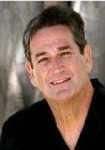By Rabbi Ben Kamin

SAN DIEGO — This past week marked the 45th anniversary of the reunification of Jerusalem, June 7, 1967—an event not planned by Israel, but sparked by Jordanian shelling into the western side of the city during the Six Day War. I was there within weeks: a 14 year-old Israeli-American visitor, welcomed by smiling Arab merchants in the Old Market, praying at stones still stained with dried blood, noting the Jordanian license plates on the cars of residents of the suddenly reborn eastern side.
In the end, the city will likely be divided—a remarkable redundancy, given that its very essence is characterized by the divisiveness that we trembling, insecure, theologically manipulated human beings apply to things and places sacred. Everyone knows that the Jerusalem is the city of heaven, so indifferent to political fences.
It’s as if Jerusalem was ever built on human coordinates—this city that transcends all prayers, and the petty men who would fence it on the face of their prayers. So whenever I’m not sure about things, I just close my eyes and visit Jerusalem. Its fury and passion arouse me from the doldrums—a city of seductive archways and magical walls, a stumbling block, a stairway to heaven.
While mortal men and women debate its sovereignty in parliamentary halls, Jerusalem goes about its business, its stones betraying more wisdom than all the mighty warriors who’ve come and gone from its golden terraces.
I like to linger in Jerusalem—an undivided, if tense, city of God since 1967. It is the ultimate paradox of secularism and religiosity. It is the living argument, and it will verify whether people can live together, once and for all.
What an awesome place this city is–this amalgam of superstores, Torah academies, soccer fields, synagogues, mosques, churches, luxury hotels, sacred tunnels, traffic jams, holiday menorahs, neon lights, rabbinic courts, parliamentary buildings, Talmudic seminaries, civic license bureaus, kosher certifying agencies, army checkpoints, mezuzah inspectors, and metal detectors. Looking at spiritual history, it would seem, as one modern writer has asserted, that trivial encounters in the narrow streets of the Old City can determine the human condition.
A broken promise in Jerusalem, a night of romance, an act of mercy, might be studied for centuries to come as a guide to the will of the universe. I fly off to the Western Wall, physical remnant of the King David’s Temple, with its protective Hasidic clans, as thick as blackberries; the Damascus Gate only a sprint away, completely trafficked by kaffiyeh-laden Arab merchants, worshipers, and soothsayers. Jerusalem, a dream in painful progress, torn from within, with timeworn blood stains practically still visible across crescent domes and ringing Christian bells and swift taxis and beleaguered mules—the ultimate paradox of Semitic spirituality and secularism.
I eat picked-dashed lamb shwarma at the tiny eateries of kindly Arab hosts, dousing the delicacy in thick hummus, deliciously completed by hot-sweet Turkish coffee. At night, I swap stories with fellow clergy along the chilly terrace of the most famous “YMCA” building in the world, sipping on the orange-chocolate Israeli liqueur called “Sabra.”
The morning comes, and in the stillness, in the golden haze, there is this fleeting illusion that Jerusalem has fulfilled all of its broken promises and satisfied the meaning of its name, city of peace. And still I return, because my prayers are never as dense as in these stony, stubborn hills, in these arched, narrow walkways of hope.
*
Rabbi Kamin is a freelance writer based in San Diego. He may be contacted at ben.kamin@sdjewishworld.com